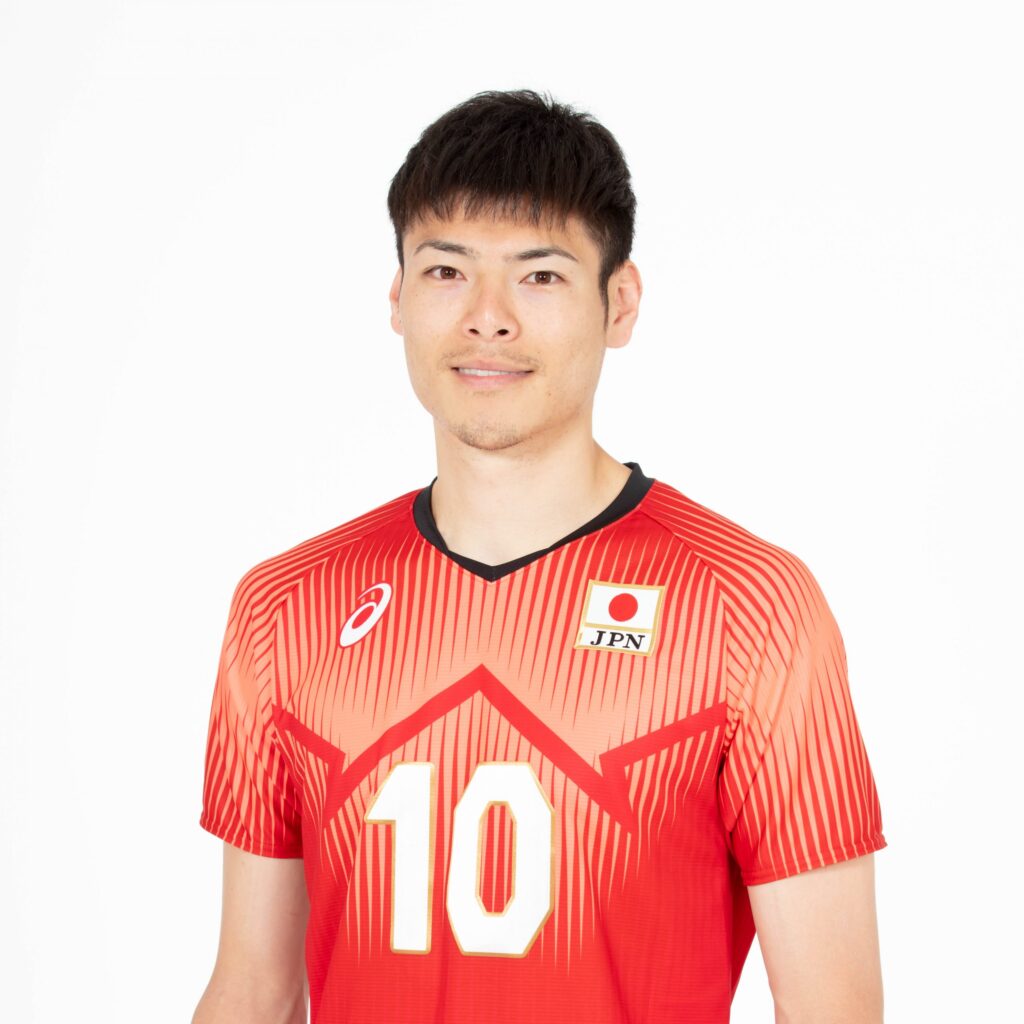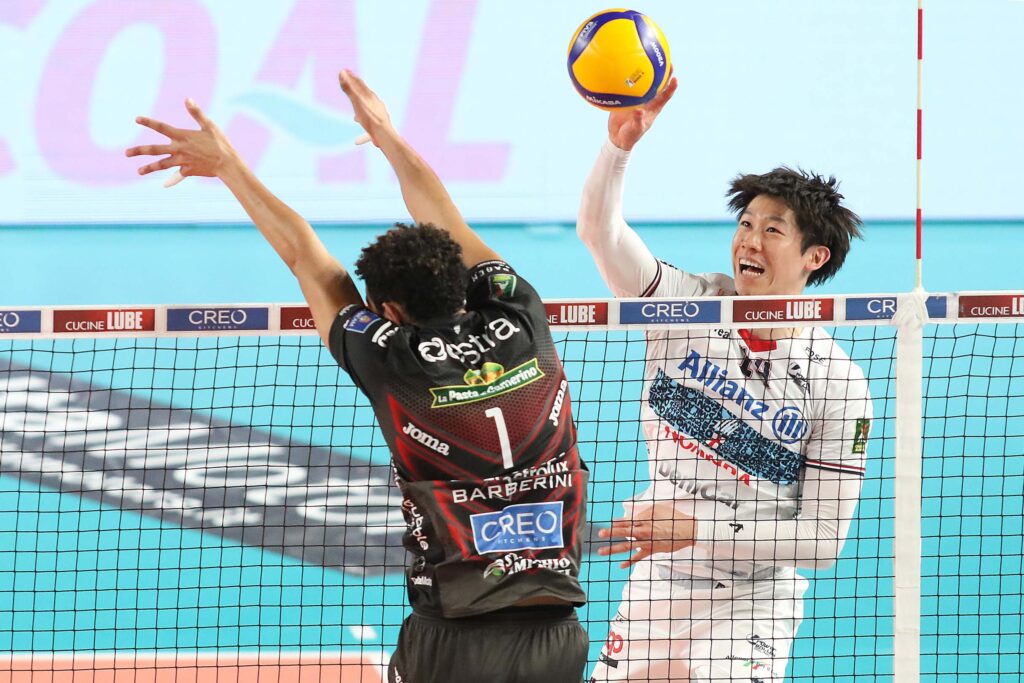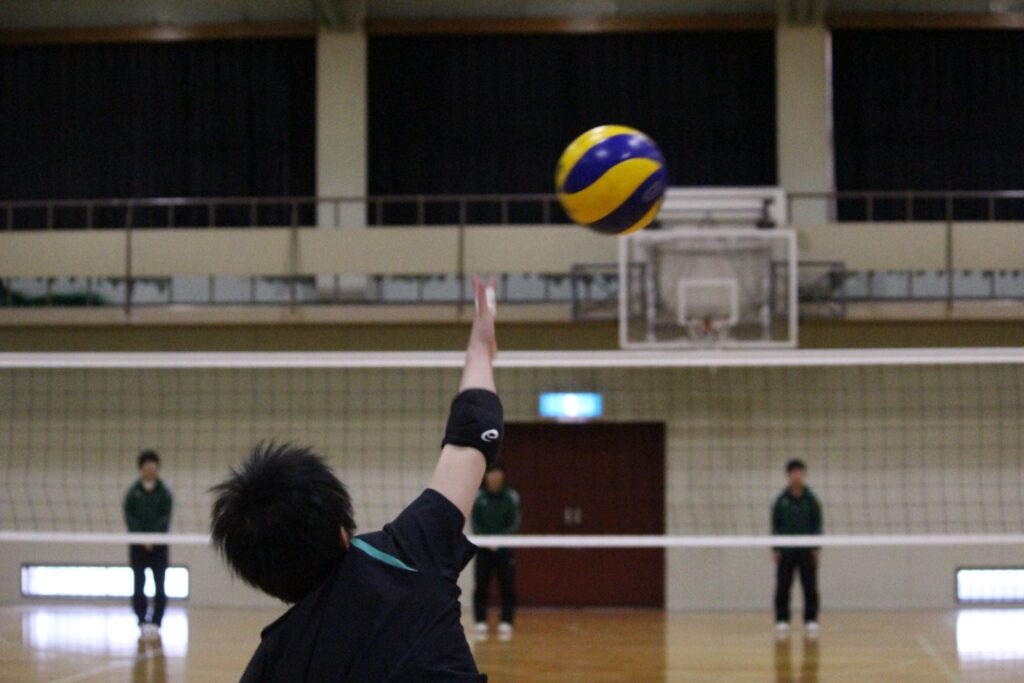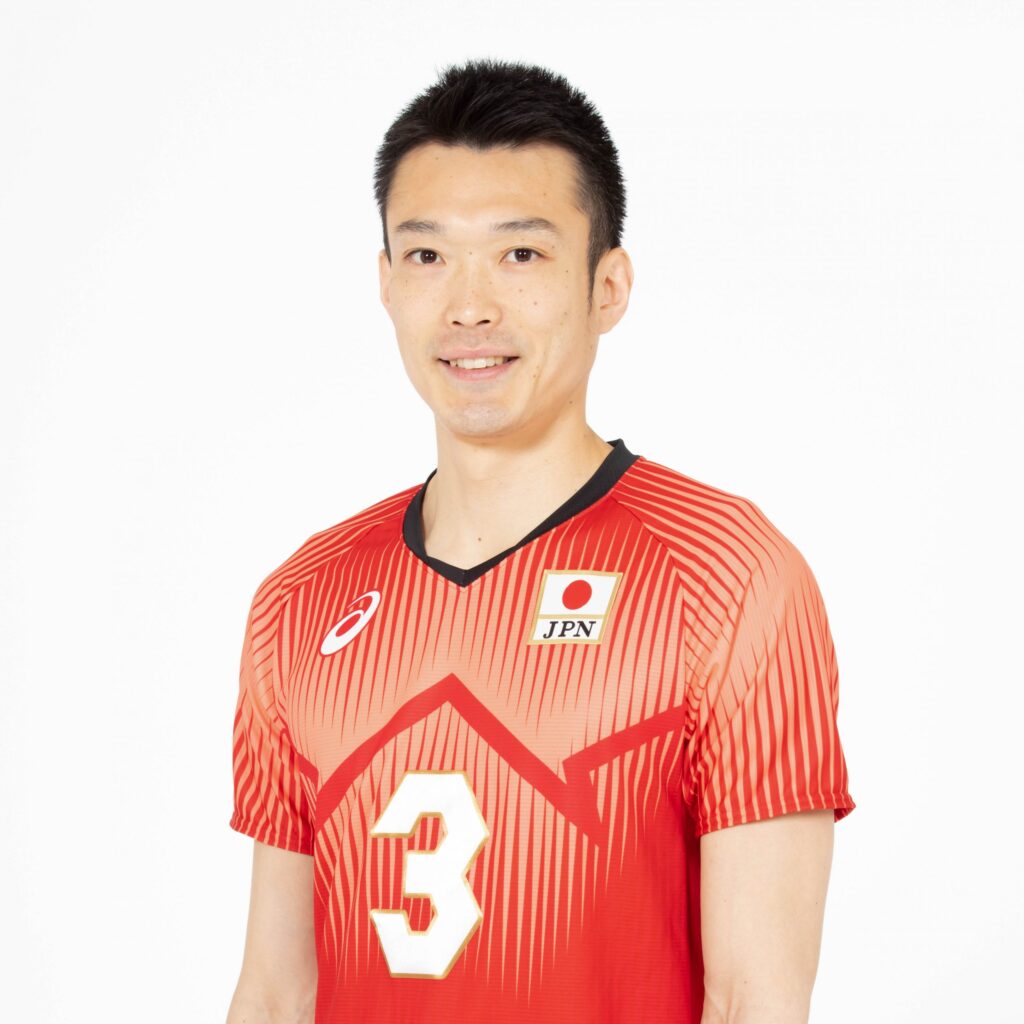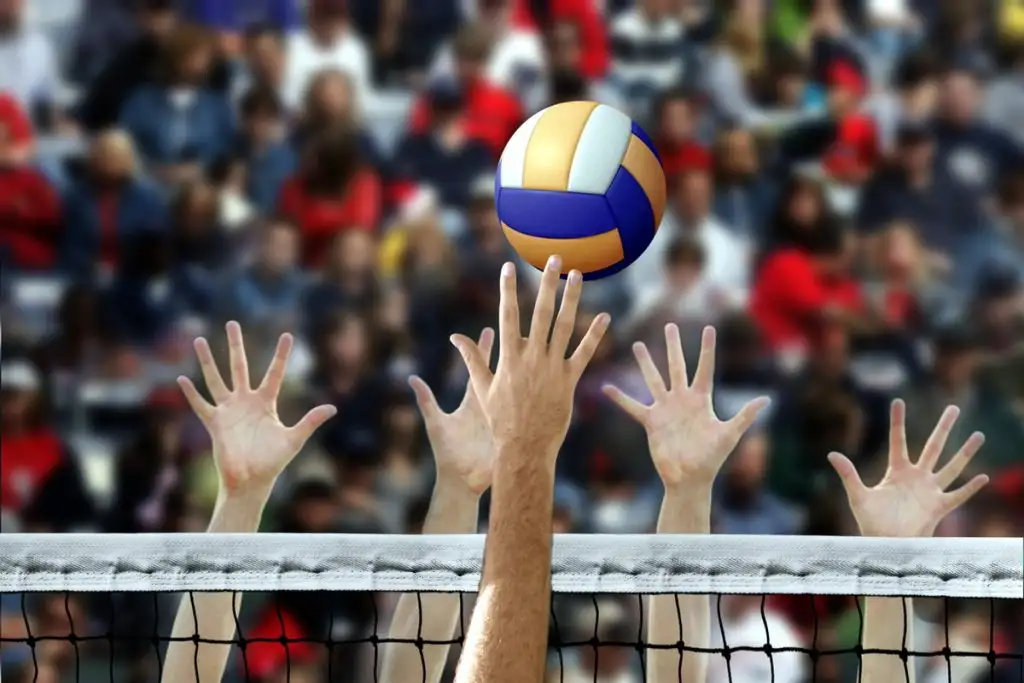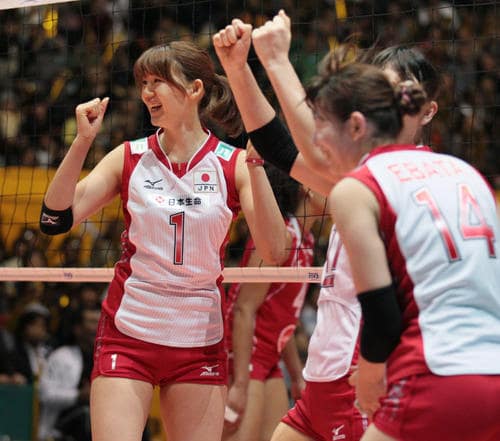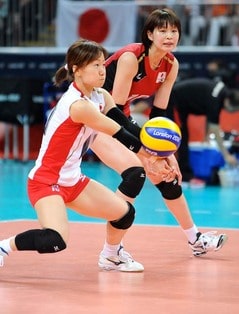
The underhand pass (or forearm pass, also known as the underhand pass) in volleyball is one of the most important techniques in the game.
This technique is essential for allowing accurate passes to teammates, especially to the setter, and creating attacking opportunities.
The importance of the underhand pass is further clarified by the following points.
-
Fundamentals of Uke (Dig) : The underhand pass is the most basic technique when a team defends an opponent’s attack. Accurate underhand passes allow teams to intercept attacks and immediately create opportunities for counterattacks.
-
Maintaining the flow of play : Volleyball is a flowing sport, and underhand passes maintain this flow. Accurate passing is essential for setting up an attack and creating chances to score points.
-
Fundamentals of Team Tactics : The underhand pass is the foundation of implementing team tactics. Accurate passes to the setter allow the team to develop a variety of attacking tactics.
-
Individual Contribution : By having all players become better at executing underhand passes, the team’s overall defense improves. Mastering this technique is one way for individual players to contribute to the team.
-
Game Control : The ability to execute underhand passes accurately is important for a team to control the pace and flow of the game. Good passes lead to setups and allow the team to take the initiative in attack.
The underhand pass is a combination of many factors, including technical accuracy, body position, arm and hand shape, and timing of contact with the ball.
By honing this technique, players will be able to play the game of volleyball more effectively and strategically.
This time, I will teach you tips and practice methods for volleyball underhand passes for beginners who are not good at such important underhand passes.
目次
What is an underhand pass?
I’m sure you already know this, but I’ll explain once again about the under ball in volleyball.
The underhand pass in volleyball is one of the basic techniques used mainly in defense.
This technique is mainly used when receiving a serve or receiving an attack from an opponent, and is necessary to stably control the ball and send it accurately to the setter.
The underhand pass is characterized by extending both arms, clasping hands, and receiving the ball with the elbows extended.
At this time, it is necessary to make the contact surface between the arm and the ball as large as possible, absorb the momentum of the ball, and send it back accurately in the specified direction.
The importance of the underhand pass is mainly due to the following points:
-
The foundation of team play: The underhand pass is an important technique that is the first step to attack. The quality of the pass is directly linked to the quality of the attack, so accurate passes greatly affect the team’s scoring opportunities.
-
Strengthen your defense: By consistently receiving powerful serves and spikes, you can prevent your opponent’s attacks and give your team the right to attack. A solid defense will make it easier to control the game.
-
Maintaining Game Flow: Smooth underhand passes improve the flow of the game and build communication and trust between teammates. Accurate passing also reduces the burden on the setter and allows for more strategic attack preparation.
Maintaining proper form and practicing are essential to developing an effective underhand pass.
Mastering this technique is an important step in solidifying your foundation as a volleyball player and becoming a valuable contributor to your team.

Tips for underhand passes
There are several tips to improve your underhand pass.
Here are some basic points to make a better underhand pass
-
Learn correct form:
- Place your feet about shoulder-width apart and bend your knees slightly to stabilize your lower body.
- Extend your arms and place your palms together (or make a fist and cover one hand) to increase the surface facing the ball. The ideal position for your arms and hands is in front of and slightly below your stomach, which is the point of contact with the ball.
-
See the ball:
- Pay close attention to the direction and speed of the ball and position your body accurately under the ball. It is important to follow the ball until the last moment.
-
Use your feet:
- Move your feet according to the position of the ball to get the best position. Use cross steps for large movements, and side steps for small adjustments.
-
Apply pressure from below the ball:
- The underhand pass uses not only the arm but also the knee (leg drive) to apply force to the ball. Try to push the ball up by bending and straightening your knees.
-
Control and direction:
- The direction of the pass is adjusted by the direction of the arms and shoulders. In order to accurately send the ball to the desired location, the direction of the shoulder and the movement of the arm at the moment of contact with the ball are important.
-
Keep practicing:
- It is important to start with basic drills and gradually progress to more complex exercises. Exchanging toss with a partner and practicing hitting against a wall are effective.
-
Relax and do:
- When you get nervous, your body becomes stiff and the quality of your passes decreases. Relax your shoulders and arms and try to receive and return the ball naturally.
-
Use feedback:
- Be open to feedback from coaches and experienced players to understand where you can improve your form and technique.
By being aware of these points and practicing continuously, you can improve your underhand passing technique.
The most important thing is to keep practicing and keep trying without fear of failure.
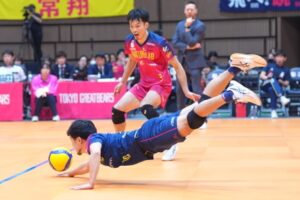
Get better! How to practice the underhand pass in volleyball
The underhand pass in volleyball is one of the basic techniques that influences the flow of the game.
Here we will show you how to effectively practice underhand passes.
By repeating these exercises, you will not only improve your technique, but also improve your performance during games.
1. Check basic posture
- Purpose: Build a foundation of correct form.
- How to do it: Stand with your feet shoulder-width apart and your knees slightly bent. Stretch your arms out in front of you and either press your palms together or make a fist and cup it with your other hand. While maintaining this posture, practice accurately catching and stopping a lightly bouncing ball.
2. Practice hitting against the wall
- Purpose: Acquire the feeling of underhand passing.
- How to do it: Stand facing a wall and perform an underhand pass about 2 meters from the wall. Return the ball from the wall with another underhand pass and repeat. The goal is to have the ball return to you at the same height as possible.
3. Toss exchange with partner
- Purpose: Practice accurate passing and improve communication.
- How to do it: Stand face to face with your partner, keeping an appropriate distance. Your partner raises the toss and returns it with an underhand pass. Take turns to improve the accuracy of each pass.
4. Practice passing while moving
- Purpose: Improve passing accuracy while moving.
- How to do it: Keep a certain distance from your partner and move around the court while passing. The goal is to continue a precise path while moving.
5. Game-style practice
- Purpose: Practice passing in situations similar to actual combat.
- Method: Practice to mimic the actual game format. Create serve-receive and defensive situations, and repeat underhand passes. This exercise aims to improve your performance under pressure during games.
Practice points
- In the early stages of practice, focus on correct form and gradually add speed and power.
- Always be aware of your position relative to the ball and move your feet to find the optimal position.
- It is important to continually take on challenges without fear of failure. With practice, you will gradually improve.
By practicing the underhand pass, you can definitely acquire the basic technique.
Improving technique leads to confidence and contributes to improving the quality of team play.
By building on correct posture and form and practicing repeatedly, you will improve your overall volleyball technique.
There are also some interesting exercises such as receiving using a cutting board to practice under.
If you have time, check out this fun volleyball practice (which can be done by two players or by elementary school students!).
Click here for volleyball glossary

